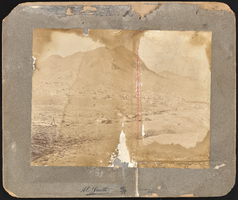Search the Special Collections and Archives Portal
Search Results
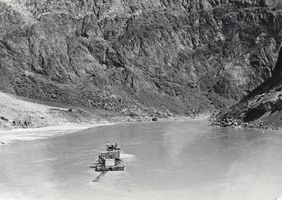
Photograph of workers in Boulder Canyon, Nevada, 1931
Date
Archival Collection
Description
Image
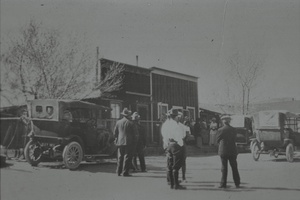
Slide of Goodsprings, Nevada, circa early 1900s
Date
Archival Collection
Description
Image
Southern Nevada photographs, 1863-1960
Level of Description
Scope and Contents
The Southern Nevada photographs depict towns, mines, railroads, workers, and settlers in Southern Nevada from 1863 to 1960. The photographs primarily depict Native American petroglyphs, desert landscapes, mines and mining machinery, and the archaeological dig at Pueblo Grande de Nevada (also known as the Lost City). The photographs depict the towns of Virginia City, Beatty, Genoa, Searchlight, Rhyolite, St. Thomas, Lost City, Pioche, and Overton. The items described include black-and-white photographic prints, postcards, negatives, and slides; items listed are photographic prints unless otherwise specified.
Archival Collection
Collection Name: Fred and Maurine Wilson Photograph Collection
Box/Folder: N/A
Archival Component
T. David Horton Photographs of Pioche, Nevada
Identifier
Abstract
The T. David Horton Photographs of Pioche, Nevada contain black-and-white photographs of several buildings in Pioche, Nevada in the 1960s. The collection contains photographs of the Pioche Power and Light Company, Pioche’s mine, crushing plant, cemetery, and oversize photographs of the town.
Archival Collection
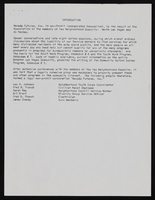
Nevada Futures General Overview: documents, reports
Date
Archival Collection
Description
From the Clark County Economic Opportunity Board Records -- Series II: Projects. This folder contains an overview on Nevada Futures, Inc. , a constitution for Nevada Futures Incorporated, and Economic Oppurtunity Board of Clark County Reports.
Text
University of Nevada, Las Vegas Department of Biology Scrapbooks
Identifier
Abstract
The University of Nevada, Las Vegas Department of Biology Scrapbooks (1966-1980) contain newspaper articles and photographs related to department interests and topics. The scrapbooks focus on student and faculty events.
Archival Collection
University of Nevada, Las Vegas Office of Vice President for Academic Affairs Records
Identifier
Abstract
Records are comprised of the University of Nevada, Las Vegas (UNLV) Office of the Vice President for Academic Affairs records from 1952 to 2009. The collection contains information about UNLV's academic affairs including information about the development and growth of departments, as well as what type of classes were offered. The collection also includes faculty schedule cards from 1955 to 1978.
Archival Collection
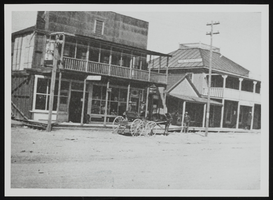
Stagecoach in Nevada, image 002: photographic print
Date
Archival Collection
Description
Image
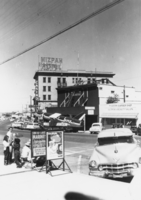
Main Street, Tonopah, Nevada: photographic print
Date
Archival Collection
Description
From the Nye County, Nevada Photograph Collection (PH-00221) -- Series VI. Tonopah, Nevada -- Subseries VI.B. Coombs Family. Mizpah Hotel is in the background next to the Butler Theatre and the Modern Barber Shop, then operated by Bob Williams.
Image
